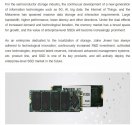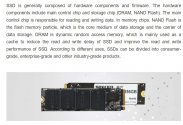The thinking in Washington is that laws of physics work differently in China when it comes to semiconductors.Rare earths was on the US dual-use ban list to China two decades ago. Look at how they managed to stop China there.
You are using an out of date browser. It may not display this or other websites correctly.
You should upgrade or use an alternative browser.
You should upgrade or use an alternative browser.
Chinese semiconductor industry
- Thread starter Hendrik_2000
- Start date
- Status
- Not open for further replies.
escobar
Brigadier
Huawei now aims to convert some of JHICC's memory chip production lines to ones that can produce processors and other so-called logic chips, two people told Nikkei Asia
NSI, which has several high-profile Chinese government funds as shareholders, specializes in radio frequency components and high-voltage analog chips. These are critical components for networking equipment and automotive applications, two of Huawei's biggest needs.
It confirm what @olalavn previous post about Huawei buying SMIC Ningbo FAB.
Its partners in this effort include Fujian Jinhua Integrated Circuit Co. (JHICC), a semiconductor factory backed by the government of Fujian province and previously a target of U.S. sanctions, and Ningbo Semiconductor International (NSI), which counts China's top chipmaker, Semiconductor Manufacturing International Corp., as a key stakeholder, four people briefed on the matter said. It is also working with several smaller government-backed chip plants in Shenzhen and elsewhere, they added.
September 2022Do we know the dates that these papers were published on.
SMIC met with Chongqing Municipal. ST Microelectronics and Bosch group were also there. Looks like the focus here is on auto industry and auto chips.
There is speculation that SMIC will announce new fab in Chongqing soon, since Tianjin fab was announced a month after SMIC met with the political leadership in Tianjin.
There is speculation that SMIC will announce new fab in Chongqing soon, since Tianjin fab was announced a month after SMIC met with the political leadership in Tianjin.
SMIC met with Chongqing Municipal. ST Microelectronics and Bosch group were also there. Looks like the focus here is on auto industry and auto chips.
There is speculation that SMIC will announce new fab in Chongqing soon, since Tianjin fab was announced a month after SMIC met with the political leadership in Tianjin.
Well if SMIC plus STM and Bosch (2 European firms) really will build a fab in Chongqing as joint venture, that's would be a huge thing, not only for the fab itself, but especially for the very strong message to US.
If this happens, it will be a big political win for China...and also for European companies. If it happens, US will go berserk!
This Research Paper looks to have been published in 2022. It looks like they are making a huge national push in the development of LPP EUVL.Interesting research on LPP EUV light sources by this team in China
Abstract
Extreme ultraviolet lithography (EUVL) has been demonstrated to meet the industrial requirements of new-generation semiconductor fabrication. The development of high-power EUV sources is a long-term critical challenge to the implementation of EUVL in high-volume manufacturing (HVM), together with other technologies such as photoresist and mask. Historically, both theoretical studies and experiments have clearly indicated that the CO2 laser-produced plasma (LPP) system is a promising solution for EUVL source, able to realize high conversion efficiency (CE) and output power. Currently, ASML's NXE:3400B EUV scanner configuring CO2 LPP source system has been installed and operated at chipmaker customers. Meanwhile, other research teams have made different progresses in the development of LPP EUV sources. However, in their technologies, some critical areas need to be further improved to meet the requirements of 5 nm node and below. Critically needed improvements include higher laser power, stable droplet generation system and longer collector lifetime. In this paper, we describe the performance characteristics of the laser system, droplet generator and mirror collector for different EUV sources, and also the new development results.
View attachment 98048
View attachment 98049View attachment 98050
View attachment 98051
View attachment 98052
advancing from 2015
The good news is that the Wuhan Uni and Huazhong Uni Team seems to have already developed a MOPA C02 Laser of at least 27kw Laser Power.
This is similar to the Gigaphoton MOPA C02 Laser which also produces 27kw of Laser Power. The Gigaphoton EUV Light Source uses a 27Kw Laser to produce Source Power of 250W.
The current Model ASML EUVL NXT3400 uses a 30kw MOPA C02 Laser and also produces Source Power of 250W.
As we can see, everything is gradually falling into place in the development of the EUVL in China.
What really slowed down the development of the EUVL for ASML in the initial stages was the search for a powerful C02 Laser and also the development of the pre-pulse technique for the illumination of the tin droplet.
It looks like a prototype of the Chinese EUVL is not too far away. The Light Source R&D would be close to completion.
The end?
I think the post-Moore era has arrived.
I think geometrical scaling and novel architectures will take over dimensional scaling. Which in return could propel novel lithography techniques with wider exposure areas and also give a chance to the rapid development of maskless lithography techniques.
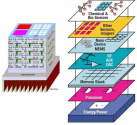
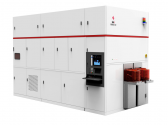
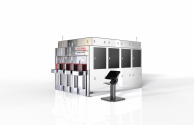
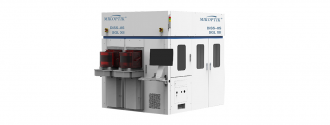
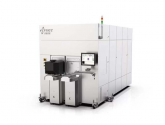
Hyper-NA after high-NA? ASML CTO Van den Brink isn’t convinced
After decades of innovation in lithography, high-NA EUV might prove to be the end of the line, thinks ASML CTO Martin van den Brink.I think the post-Moore era has arrived.
I think geometrical scaling and novel architectures will take over dimensional scaling. Which in return could propel novel lithography techniques with wider exposure areas and also give a chance to the rapid development of maskless lithography techniques.





- Status
- Not open for further replies.

